Waders are a group of birds that share common features such as elongated legs, long toes and necks, habitats, etc. Some of these birds are: White Ibis ( Eudocimus albus ), Glossy Ibis ( Plegadis falcinellus ), Jabiru ( Jabiru mycteria ), and Wood Stork ( Ciconia maguari ).
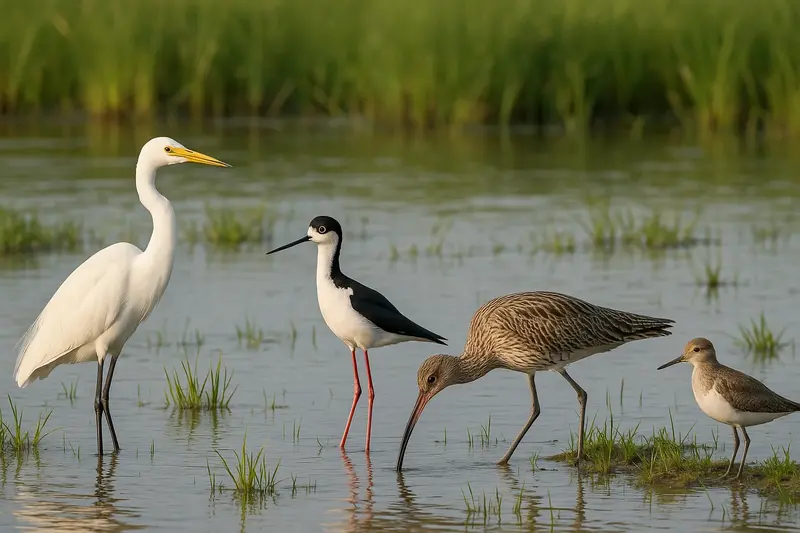
What are wading birds?
Roseate Spoonbill
White Ibis
Glossy Ibis
Jabiru
American Stork
Great Egret
White Heron
Waders are birds that share common characteristics, including:
Their legs are long and thin, allowing them to move through shallow water environments and stay stable while searching for food. Also, long legs help keep their feathers dry when they enter wet conditions.
Their toes are long and thin, which prevent them from sinking to the bottom of the water and the soft mud of the riverbank. In addition, they disperse the weight of these tall birds and help them balance on their long legs.
They have long bills of different shapes to accommodate different feeding strategies.
They feed on fish, crustaceans, mollusks, etc. However, their diet does not all come from water, they also eat insects, small reptiles, and other terrestrial prey.
They have long, strong necks that allow them to change postures while searching for prey, improving angles, visibility, and camouflage.
They rely on wetlands for food, reproduction, nesting, and shelter.
Most birds nest in colonies that often include several species of waders, as well as other waterfowl such as gulls and cormorants. These colonies, known as breeding colonies, have the advantage of being safe from predators and food supplies.
Other threats facing waders include natural phenomena such as storms and droughts that threaten their habitats and young birds. Climate change is exacerbating natural disasters by increasing the intensity, frequency, and duration of weather events. On the other hand, habitat fragmentation and loss due to human development pose a serious threat to wading birds. Diversion of water sources for irrigation and human consumption and construction of dams also cause wetlands to dry up and rivers to reduce flow, endangering these amazing animals.
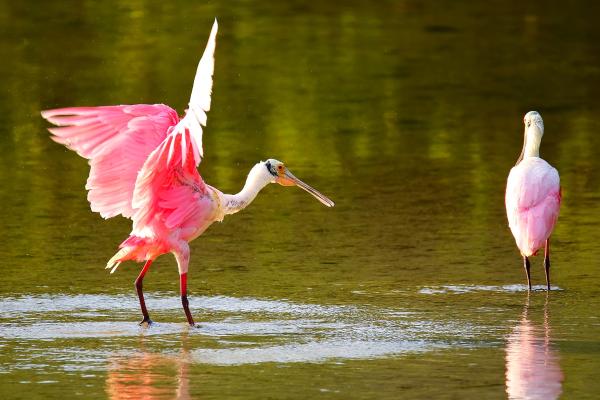
The Roseate Spoonbill (Platalea ajaja) is a striking wading bird with pink plumage and a distinctive long, flat, spade-shaped bill. It lives in humid areas of the southeastern United States, Central America, the Caribbean, and much of South America. The depth of their color changes with age and diet, with the breeding adults being the most colorful. It feeds by moving its bill from side to side in shallow water, filtering small fish, crustaceans, and aquatic insects. It is usually seen in groups and often with other water birds.
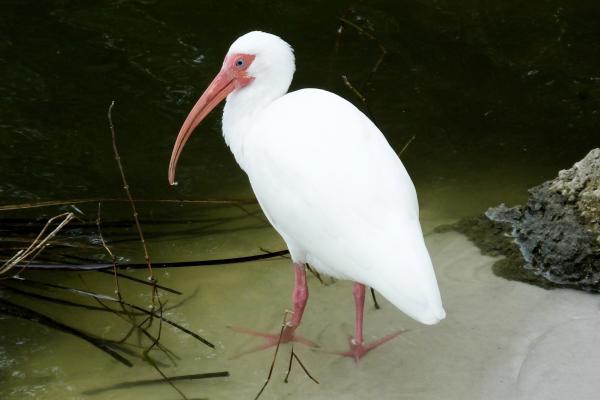
The White Ibis (Eudocimus albus) is a medium-sized wading bird characterized by its white plumage, long, downward-curved pink or orange beak, and legs. It is widely distributed in the southeastern United States, Central America, the Caribbean, and humid areas of South America. It prefers to inhabit swamps, mangroves, lagoon edges, and estuaries, where it feeds on insects, crustaceans, and small fish caught by probing the mud with its beak.
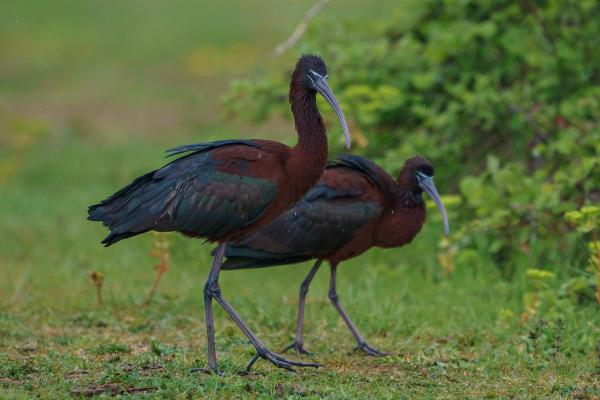
The Glossy Ibis (Plegadis falcinellus) is a medium-sized bird characterized by its dark plumage with a metallic sheen of green, copper, and purple, which is particularly noticeable in sunlight. It has long, black legs and a thin, downward-curved bill, which it uses to search the mud for invertebrates, small crustaceans, and amphibians. It is found in warm temperate humid areas of all continents except Oceania and Antarctica. It lives in lagoons, estuaries, and swamps, usually in groups, often with other species of ibises or herons.
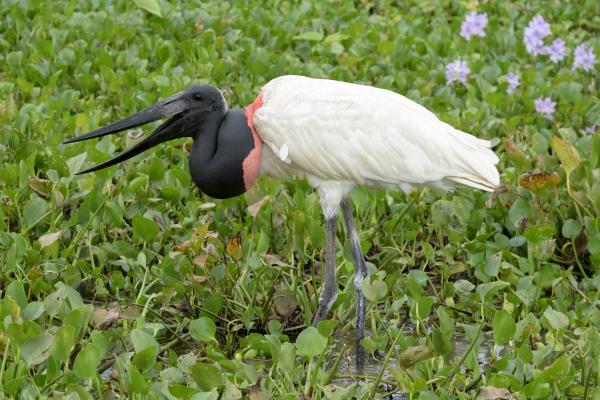
The American Stork (Jabiru mycteria) is the tallest flying bird in Central and South America and the second largest bird in the continent by wingspan. It lives near lagoons and rivers and feeds mainly on fish, mollusks, and amphibians. Its name comes from the Guarani word for "swollen neck" because it can inflate the subcutaneous air sacs located in the neck, which increases the bird's lightness, helps breathing, and regulates body temperature.
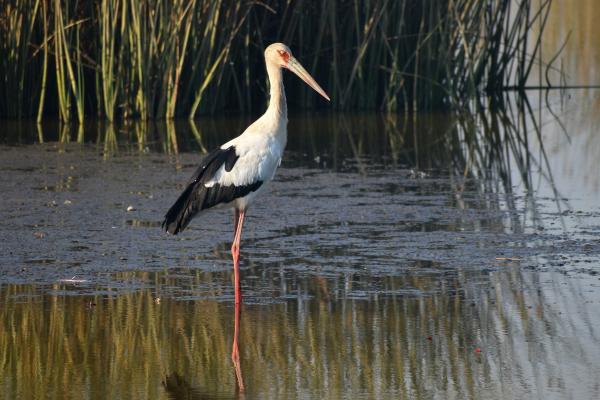
The Wood Stork (Ciconia maguari) is a large bird that can reach up to 130 cm in length. It has a large beak and slender red legs. It lives in wetlands in tropical and subtropical America and feeds on fish, crabs, mollusks, crustaceans, and insects. They form small flocks and usually fly at high altitudes.
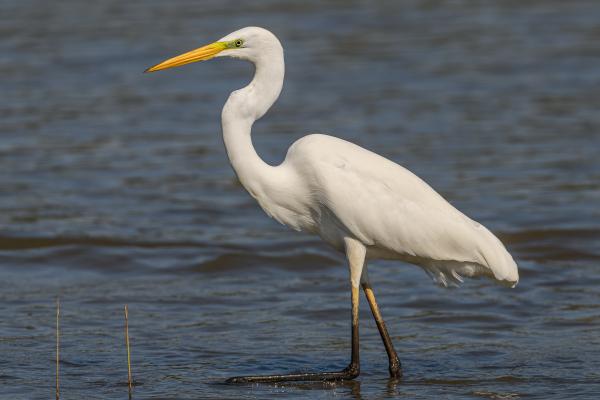
The Great Egret (Ardea alba) is a large, slender, white-feathered wading bird with a wide distribution, found on all continents except Antarctica. It has black legs and a long orange-yellow beak. It is a solitary animal, usually found in calm shallow waters, and feeds on invertebrates, fish, and amphibians, using its beak like a harpoon.
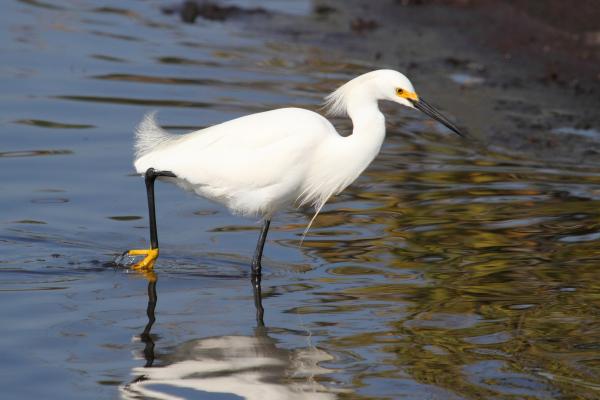
The White Heron, commonly known as the Egret, is native to the American continent. It can reach a length of up to 60 cm. Its plumage is white, and the feathers on the back and chest become thinner during the breeding season. Its beak and legs are black. These characteristics distinguish it from the White Heron (Ardea alba), in addition to its smaller size.
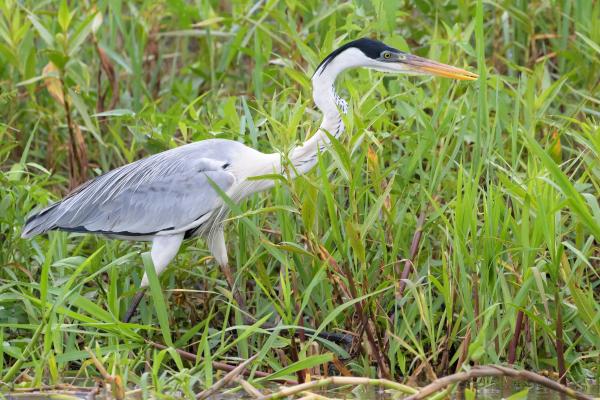
The Purple Heron (Ardea cocoi), native to Central and South America, is a wading bird that lives in freshwater and saltwater wetlands and often roosts in trees. Its plumage is lead white, with typical long feathers on the nape, back and chest. Its beak and legs are yellow. They are diurnal animals and generally solitary, but can also form small groups.
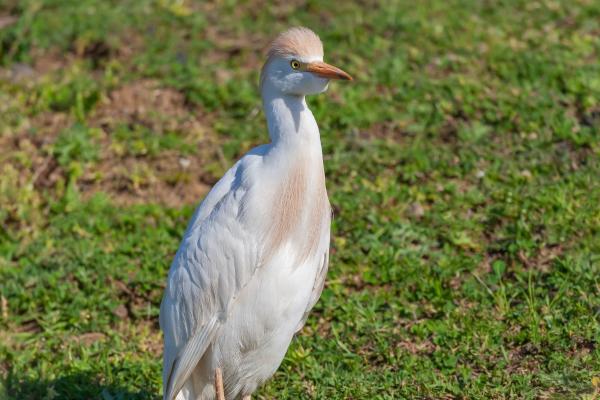
The Cattle Egret (Ardea ibis) inhabits all tropical, subtropical and temperate regions of the world and can be found in savannas, grasslands, mangroves, swamps, agricultural areas and reservoirs. It is slender and white in color, with golden or orange feathers on its head and neck during the breeding season. Its common name is because it often perches on cattle.
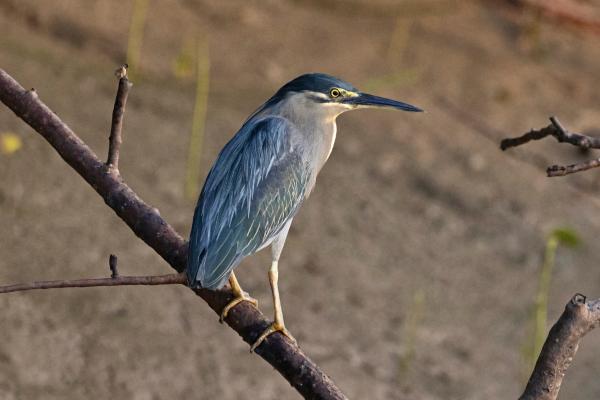
The Blue Heron (Butorides striata) is native to the Americas, Asia, Africa and Oceania, and lives in saltwater and freshwater environments. Adults can reach 48 cm in length. Its crown and ridge are green-black. The front of the neck and chest are ochre-brown. The rest of the neck, abdomen and flanks are gray. The back is gray, but without the green reflection. It uses its long bill to prey on fish and small insects.

The Great Blackbird (Botaurus pinnatus) is a large wading bird that lives in areas with tall grass or reeds in tropical America. It is solitary and has cryptic light brown plumage with brown spots. It is a patient and agile hunter that feeds on fish, insects, amphibians and small mammals.
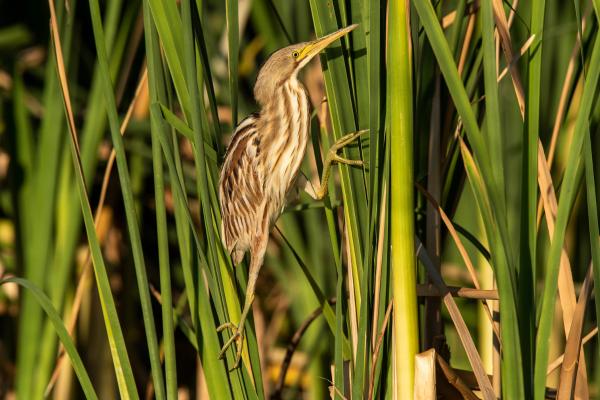
The Striped Blackbird (Botaurus involucris) is a wading bird native to South America. It is small in size and has plumage with black, ochre and cinnamon stripes. It is a difficult species to observe and its flight is short. It lives in estuaries and lagoons with dense reed beds or cattails.
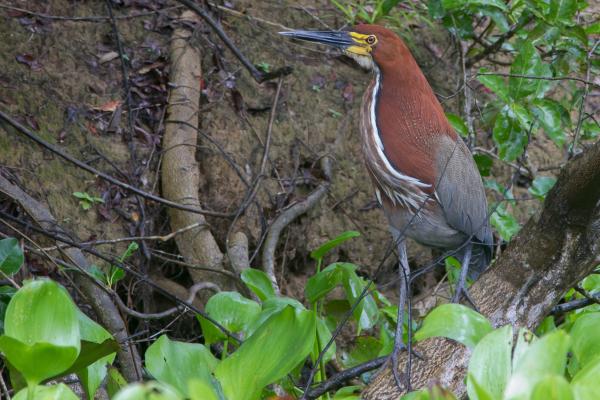
The Red-faced Hawk (Tigrisoma lineatum) is widely distributed in Central and South America. It lives in environments close to waterways and rich in vegetation. Its neck is brown, and its feathers are black and white with stripes. Its back is brownish gray and red. It is a solitary and slow-moving species.
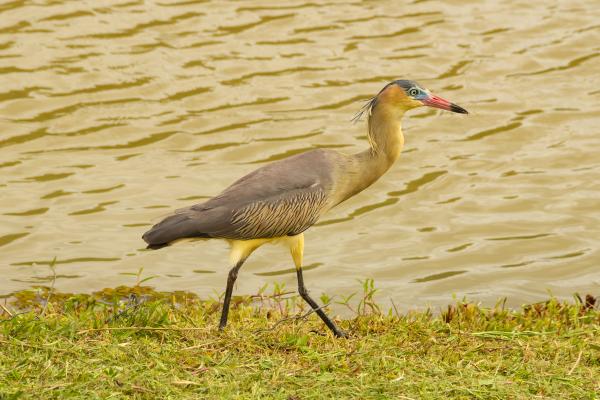
Syrigma sibilatrix, commonly known as chiflón, lives in puddles, swamps, meadows, rural areas and mountain sides. This is a species with a pink-purple bill with a black tip. Its legs are black and its irises are grayish white. Its back is gray or light blue, and its neck and chest are yellow. They usually appear in pairs, and occasionally form groups of up to 45. It emits a long, hoarse whistle.
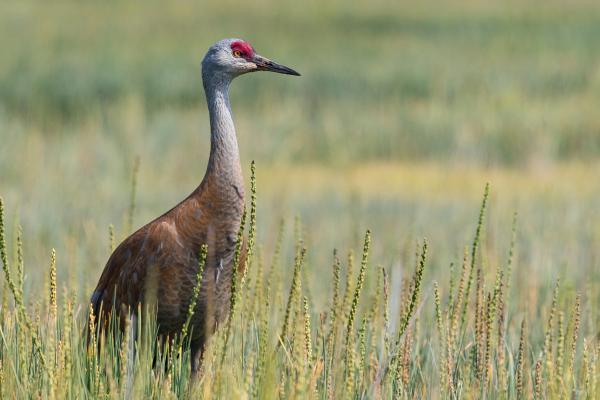
The Sandhill Crane (Antigone canadensis) is a large wading bird with gray plumage, black legs, and a striking red patch on its forehead. It is found throughout North America, migrating long distances south in the winter, even reaching parts of Central America. It inhabits grasslands, wetlands, and open fields, and feeds on a variety of foods including roots, grains, insects, and small vertebrates. It is known for its loud calls and dance rituals that include leaps and coordinated movements between couples.
animal tags: Waders Waterfowl Wetlands
We created this article in conjunction with AI technology, then made sure it was fact-checked and edited by a Animals Top editor.